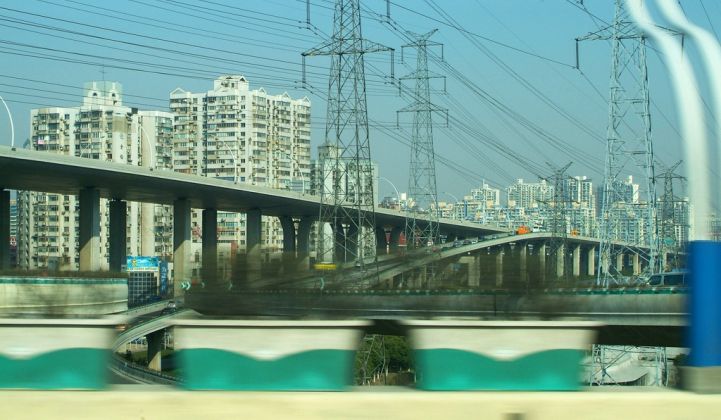China wants hundreds of millions of new smart meters -- but they’ve got to be cheap, they’ve got to be rugged, and they’ve got to be built (mostly) in China. That doesn’t mean foreign competitors can’t build what goes inside them, however.
Take Singapore-based Semitech, which announced Tuesday that its powerline communications (PLC) chips are being deployed in China, nestled inside Chinese meters built by LangFang Gao. The two have installed more than 5,000 Semitech-based PLC smart meters in two residential sites for building submetering and one village site for remote reading of meters, according to a press release.
Five thousand down, hundreds of millions more to go. China is by far the world’s biggest future smart grid market. It’s expected to outpace the United States in overall spending by mid-decade. A December report by research firm MarketLine predicts China’s electricity market will grow from $355 billion in 2010 to $762.3 billion by 2015.
Most of that will be in big transmission projects, including the world’s largest high-voltage direct current (DC) systems -- State Grid Corporation of China (SGCC) plans to spend 1.7 trillion yuan ($255 billion) on transmission in the next five years. Smart meters, on the other hand, are a $3.1 billion market today, though Taiwanese research firm Yuanta Securities predicts that will grow to $7.8 billion for 286 million smart meters installed by 2020.
State Grid Corp. of China, the country’s biggest utility, is seeking to deploy about 500 million smart meters over the coming five years, according to Research and Markets. LangFang Gao and Semitech have been deploying their meters with China Southern Power Grid, the country’s second-largest state-owned utility.
Semitech says its technology “uses modulation and signal processing technology that is adjustable in speed but also frequency-agile to deliver highly robust and reliable communications.” Robust and reliable are the key items here -- China wants its smart meters to talk over power lines across the country, which means lots of rural patches with “dirty,” or unstable, power grids.
China also wants its smart meters to be cheaper than the $200-and-up ranges seen in North America, or even the $100-and-up for European smart meter projects. Taiwanese research firm Yuanta Securities said in a January report that SGCC wants its smart meters to cost about $32.60 apiece on average.
China has pretty firmly turned to powerline carrier (PLC) technology, rather than wireless technology, to connect its meters, promising that half of its meters will be PLC-enabled by 2015. It’s expected that the meters themselves will be built by Chinese incumbents, with top players such as Ningbo Sanxing Electric, Wasion, Hi Sun Technology, Linyang Electronics and Holley Metering expected to dominate China’s smart meter market.)
But the technology inside them can come from somewhere outside China. Potential entrants include Norwood, Mass.-based Analog Devices, which is working with China’s Nanjing NARI, and Milan, Italy-based Accent, which is working with Chinese PLC comms maker TopsComm.
Likewise, San Jose-based Echelon, a leader in PLC smart metering in Europe, is working with China’s Holley Metering, which could see the San Jose, Calif.-based company’s technology deployed in a Chinese plastic case. Aclara, the smart meter comms and software arm of Saint Louis, Mo.-based ESCO Technologies, has worked with Wasion on deploying Aclara’s PLC technology in China.
Outsiders have a lot of Chinese competition, of course. Chinese startup Miartech has been building PLC chips for SGCC since 2005 and recently was named one of three technologies SGCC would consider as guiding standards for the country. Miartech landed $6 million from DFJ DragonFund in 2006 (PDF), and in November got an investment from Intel, along with nine other Asian companies that took home a combined $40 million. Other top Chinese PLC chip makers include Eastsoft and FXXC.



